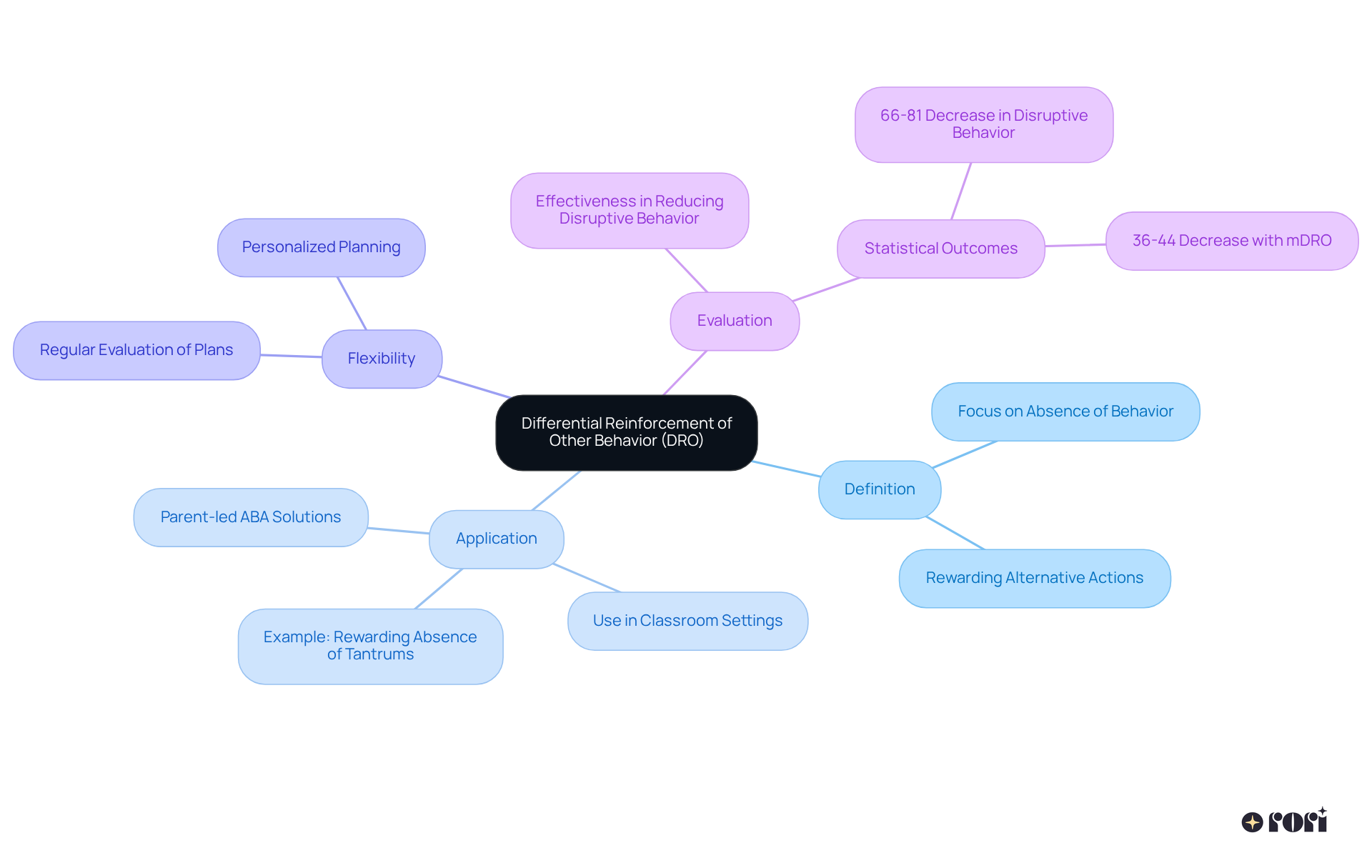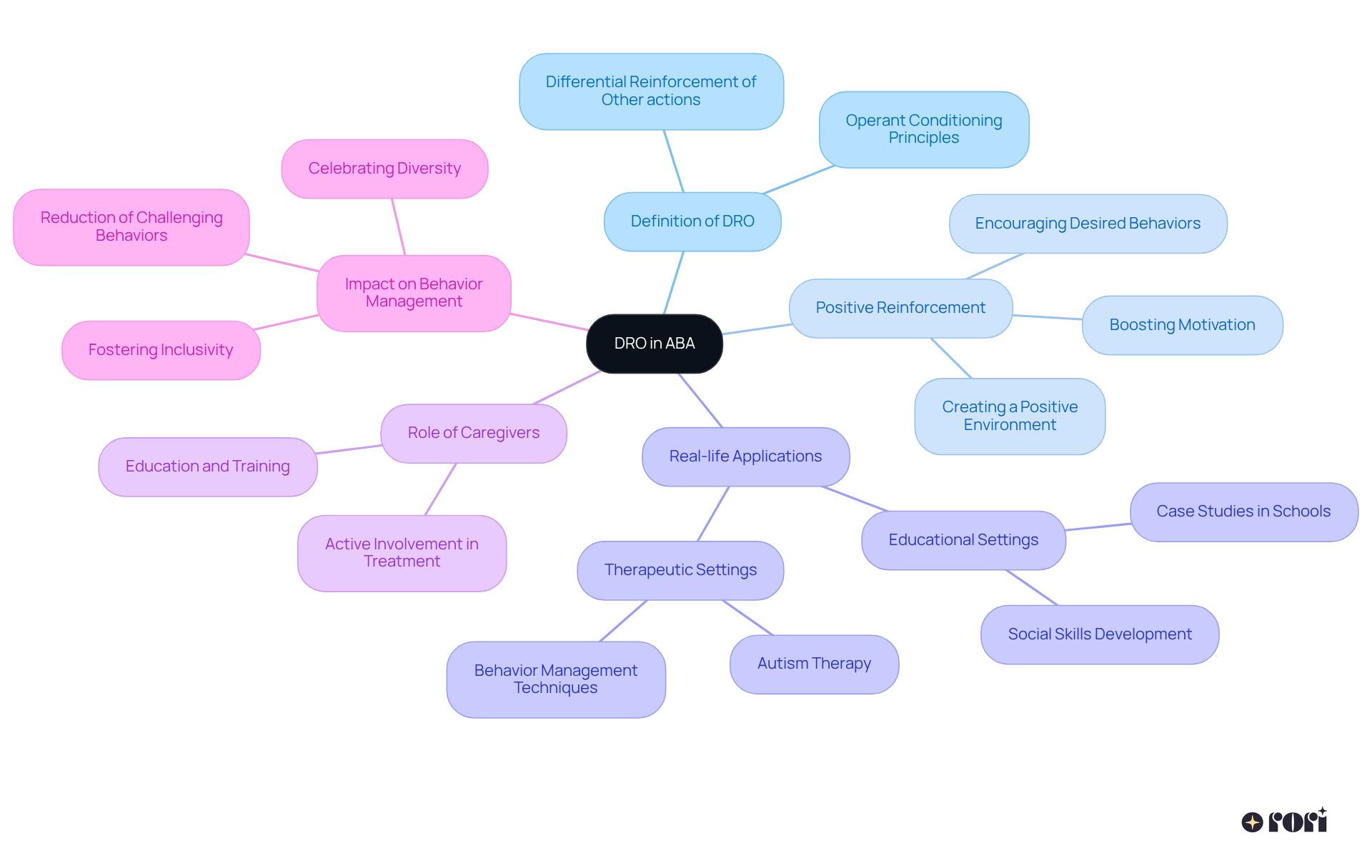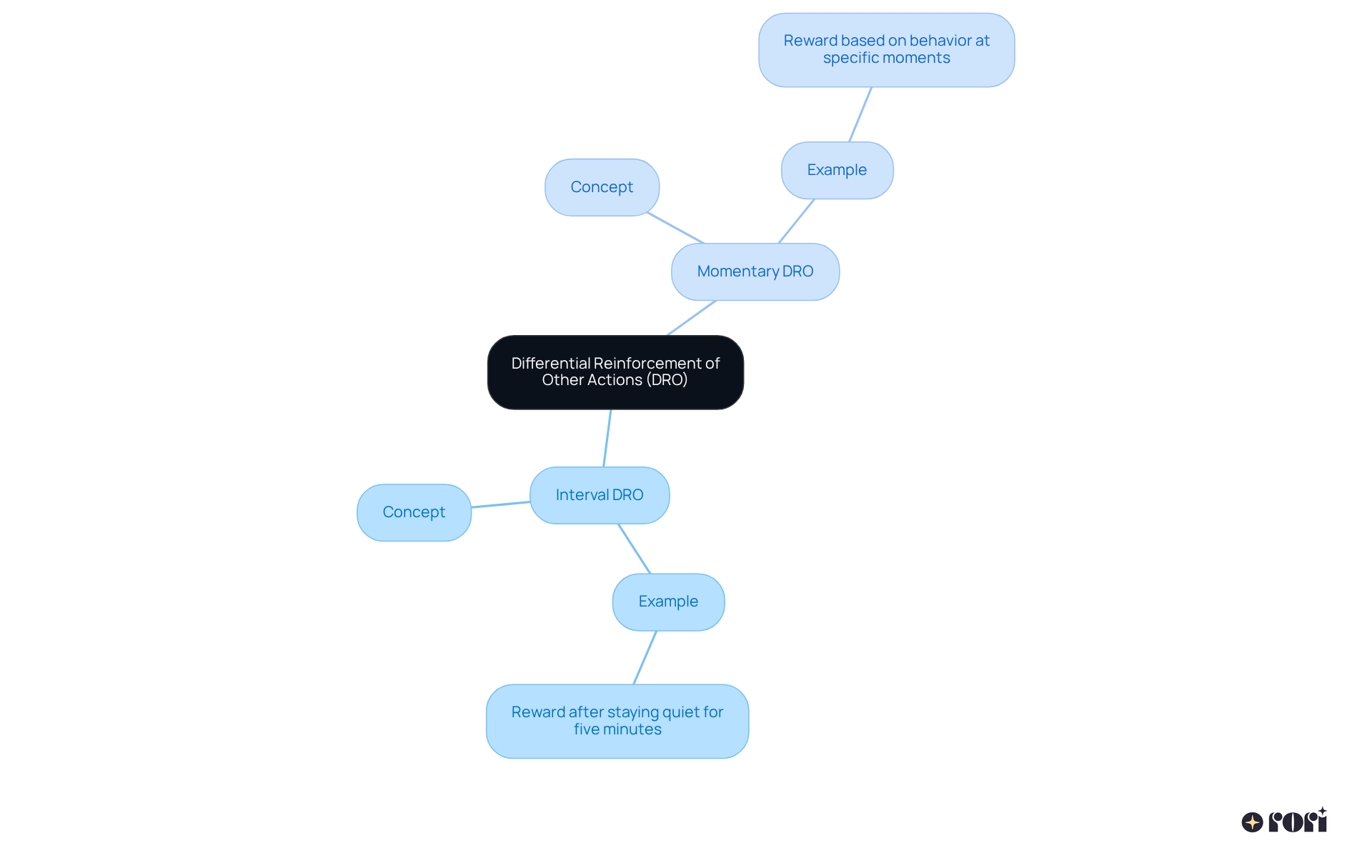Differential Reinforcement of Other Actions (DRO) in Applied Behavior Analysis (ABA) is a helpful technique that rewards individuals for not engaging in specific unwanted behaviors during set time intervals. This approach really shines because it promotes positive behaviors by recognizing and reinforcing the absence of those problematic actions. By doing this, DRO helps create a supportive environment where learning and growth can flourish.
Let’s explore this together! By focusing on what kids are doing right, we can foster a sense of achievement and encouragement. It’s all about building a nurturing space where everyone can thrive. We’re here to help you every step of the way!
Understanding the nuances of behavior management can feel overwhelming, especially when dealing with the complexities of Applied Behavior Analysis (ABA). At the core of this field is a powerful technique called Differential Reinforcement of Other Behavior (DRO). This method focuses on rewarding the absence of undesirable actions, which not only encourages positive behaviors but also creates a nurturing environment for growth and learning.
But how can caregivers effectively put DRO strategies into practice to ensure meaningful progress in behavior modification? Let’s explore this together! By diving into this question, we can uncover the transformative potential of DRO in shaping behavior and enhancing the lives of individuals, particularly those facing behavioral challenges. We’re here to help you every step of the way!
In Applied Behavior Analysis (ABA), what does DRO stand for? DRO refers to Differential Reinforcement of Other Actions, a helpful technique that focuses on rewarding the absence of a specific unwanted behavior for a certain period of time. Essentially, DRO encourages individuals by recognizing their efforts to avoid engaging in problematic actions during a set interval. This approach not only promotes participation in different activities but also helps reduce those unwanted behaviors.
For example, imagine a young person who often has tantrums; this behavior might lead one to ask, what does DRO stand for in ABA? A skilled behavior analyst might use a DRO strategy, prompting the inquiry of what does DRO stand for in ABA, by offering reinforcement when the child successfully avoids tantrums for a designated time. It’s all about personalized planning, which includes measurable goals and evidence-based strategies tailored to each child’s unique needs.
Moreover, keeping the DRO plan flexible and regularly evaluating it ensures that it stays in tune with the child’s progress. This empowers caregivers to actively support their children’s behavioral goals through data collection and the application of ABA principles. Let’s explore this together! Remember, you’re not alone on this journey, and we’re here to help you every step of the way!

To understand what does DRO stand for in ABA, it refers to Differential Reinforcement of Other actions, which uses the principles of operant conditioning to influence behavior through positive incentives. In the world of Applied Behavior Analysis (ABA), understanding what does DRO stand for in ABA is a proactive way to manage actions. It focuses on rewarding positive behaviors instead of punishing negative ones. This approach works wonders in educational and therapeutic settings, where the goal is to reduce challenging behaviors while encouraging more suitable alternatives. By emphasizing the reinforcement of other actions, DRO helps create a positive environment that fosters learning and growth.
You might be wondering how this works in real life. Well, recent advancements in behavior management techniques really shine a light on the power of positive reinforcement. It not only boosts the desired actions but also creates an inclusive atmosphere that celebrates diversity. Case studies show that using DRO in schools leads to better outcomes, as it motivates students to engage in positive behaviors, which in turn reduces disruptive conduct.
And here's something important: when caregivers are educated about these strategies, they can provide better support. They gain the knowledge and skills needed to make informed decisions that positively impact their child's progress. This active involvement fits right into the core principles of operant conditioning, making it important to understand what does DRO stand for in ABA, as it is an essential tool in autism therapy and broader behavior management strategies.
Plus, our care engine integrates functional behavior analysis with automatic progress report generation, allowing caregivers to monitor their child's progress effectively. This support is vital for implementing DRO successfully. As a motivational quote reminds us, 'Every step forward is a step toward success.' This highlights the positive outcomes that come from using DRO and positive reinforcement strategies. So, let’s explore this together! We're here to help you every step of the way!

Differential Reinforcement of Other Actions (DRO), which answers the question of what does DRO stand for in ABA, is a fascinating approach that includes various methods, like interval DRO and momentary DRO, each with its own unique role in shaping behavior.
Recent research really shines a light on how effective these DRO methods can be in treating autism. Studies have shown that both signaled and unsignaled FM DRO schedules can significantly reduce challenging behaviors, like aggression and self-injury, while also increasing reinforcement opportunities for kids.
In one case study, a child named Curtis saw his aggression drop to zero after just five sessions of unsignaled DRO, proving how impactful this method can be in keeping aggression rates low.
Understanding these DRO variants allows practitioners to tailor their interventions to meet the unique needs of each child, ensuring that the chosen approach aligns with their specific behavioral challenges. This flexibility is key to maximizing the effectiveness of ABA therapy and promoting positive behavioral outcomes.
Let’s explore this together and see how we can support your child’s journey!

In various settings like schools, homes, and therapy clinics, one might wonder what does DRO stand for in ABA as it can be a fantastic tool. Picture this: in a classroom, a teacher might use DRO to help students stay focused by giving them little rewards for staying seated during lessons. If a student remains seated for ten minutes without standing up, they earn a small treat, reinforcing that positive behavior. Similarly, at home, parents can adopt DRO by rewarding their kids for not acting out during family meals. By consistently applying strategies that answer what does DRO stand for in ABA, caregivers can support young ones in managing their actions better, leading to improved social interactions and overall well-being.
There’s some encouraging evidence out there! Case studies show that kids who receive DRO reinforcement often experience a noticeable drop in challenging behaviors over time. For example, one study highlighted that students rewarded for appropriate behavior in the classroom significantly reduced their out-of-seat actions, creating a more positive learning environment. Plus, statistics reveal that young individuals utilizing DRO techniques enjoy better communication skills and fewer disruptive behaviors, highlighting what does DRO stand for in ABA and how effective this method can be in promoting positive changes. By weaving DRO into everyday routines, both educators and parents can cultivate nurturing environments that inspire good behaviors and enhance children's quality of life. Let’s explore this together!

Differential Reinforcement of Other Actions (DRO) is such an important strategy in Applied Behavior Analysis (ABA). It focuses on rewarding the absence of unwanted behaviors, which not only encourages individuals to engage in more positive actions but also creates a nurturing environment for personal growth and development. By understanding and implementing DRO, caregivers and educators can truly enhance the behavioral outcomes for those they support.
Throughout this article, we’ve explored various aspects of DRO, including its definition, practical applications, and the different types like interval and momentary DRO. Each of these plays a crucial role in shaping behavior. It’s amazing to see how tailored interventions can effectively reduce challenging behaviors while promoting positive alternatives. Plus, the involvement of caregivers and the ongoing evaluation of DRO strategies highlight the importance of a collaborative approach to behavior management.
Ultimately, we can’t overlook the significance of DRO in ABA. It’s a powerful tool for behavior modification that not only helps manage unwanted behaviors but also enriches the learning and therapeutic experiences of individuals. Embracing DRO strategies can lead to transformative changes, encouraging a more positive atmosphere in educational and therapeutic settings. By fostering a commitment to understanding and applying these techniques, caregivers and practitioners can truly help individuals thrive, paving the way for lasting success and improved well-being. Let’s explore this together and continue to support each other on this journey!
What does DRO stand for in Applied Behavior Analysis (ABA)?
DRO stands for Differential Reinforcement of Other Actions, a technique that rewards the absence of a specific unwanted behavior for a certain period of time.
How does Differential Reinforcement of Other Behavior (DRO) work?
DRO encourages individuals by recognizing their efforts to avoid engaging in problematic actions during a set interval, promoting participation in different activities and helping to reduce unwanted behaviors.
Can you provide an example of how DRO is used?
For instance, if a young person often has tantrums, a behavior analyst might use a DRO strategy by offering reinforcement when the child successfully avoids tantrums for a designated time.
What is important for creating an effective DRO plan?
An effective DRO plan includes personalized planning with measurable goals and evidence-based strategies tailored to each child's unique needs.
How can caregivers support their children’s behavioral goals with DRO?
Caregivers can support their children's behavioral goals by actively participating in data collection and regularly evaluating the DRO plan to ensure it aligns with the child's progress.